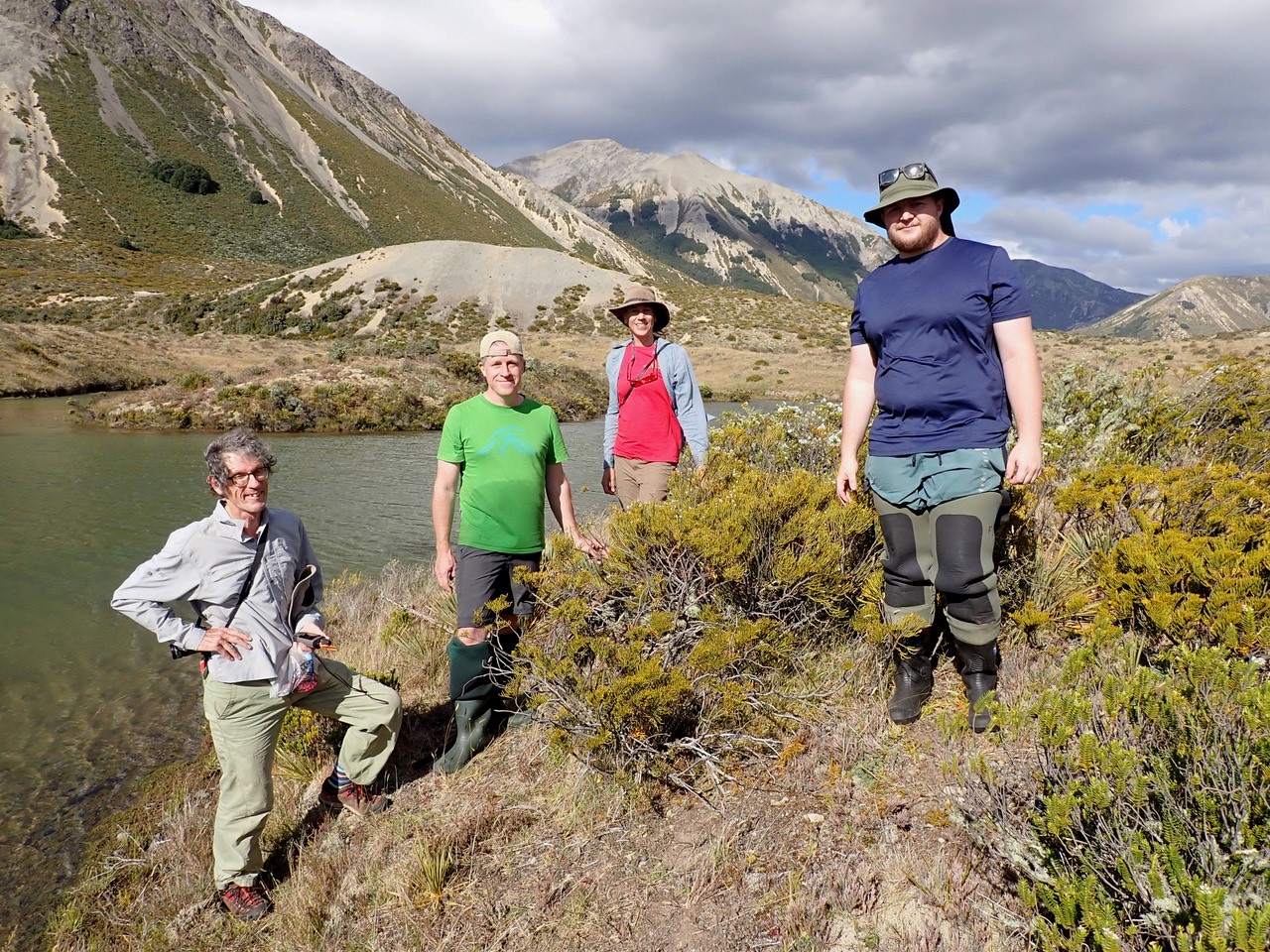Moa’s Ark Research Principal Ecologist Dr Debra Wotton and her colleagues at University of Canterbury recently completed research on conservation genetics of the endangered shrub Veronica armstrongii (Armstrong’s whipcord hebe). The project was a collaborative effort, with genetic analyses carried out as part of Ben Gibbons MSc thesis, supervised by Associate Professor Pieter Pelser, Emeritus Professor Dave Kelly and Dr Wotton.

Veronica armstrongii is known from only two extant populations in Canterbury, one of which has undergone a severe reduction in size (also known as a population bottleneck). Like many threatened species, V. armstrongii may face long-term challenges due to loss of genetic diversity and inbreeding depression. These genetic challenges are common in small and isolated populations, and can reduce resilience against environmental changes such as global warming. Nevertheless, our recently completed research shows that, surprisingly, genetic diversity was as high in the bottlenecked population as in the large population, and we found no evidence of inbreeding in either population.
Veronica armstrongii was first described from the upper Rangitata catchment in Canterbury, where it is now presumed extinct. The largest remaining V. armstrongii population is in the Pukio Valley, and numbered more than 1,700 adult plants in 2001. The second extant population, at Enys Scientific Reserve, had only six plants in 1974, but has since increased to 83 adult plants and 279 juveniles, following nursery-raised restoration plantings using seed collected from the reserve.

We collected leaf samples from the two wild populations and cultivated plants, and used genomic analyses to assess how genetically distinct the two extant populations are. We also compared the genetic diversity of the severely bottlenecked Enys Reserve population with the large Pukio Valley population, and investigated whether cultivated plants (potentially descended from Rangitata populations that are now extinct) contain genetic material that is no longer found in the wild.

Despite recently undergoing a severe population size bottleneck, the genetic diversity of the Enys Reserve population is similar to the Pukio Valley population. This result was entirely unexpected. We found no evidence of inbreeding in either population. Our research shows that the Enys Reserve and Pukio Valley populations are genetically distinct, and are currently most likely reproductively isolated from each other. Enys Reserve is about 40 km southwest of the nearest plants at Pukio Valley, so northwest gales cannot blow either seeds or insects carrying pollen from one population to another. There is some evidence of historical gene flow from the Enys Reserve population to the population at Pukio Valley, but we found no sign of recent gene flow between the two.

At Enys Reserve, we found two groups of plants that are genetically distinct from each other. This was unexpected, because all plants in this population are the offspring of only six plants, grow in close proximity to each other, and our studies revealed no sign of gene flow from the Pukio Valley population. These may represent different chromosomal races, but this remains to be verified.
At Pukio Valley, we found two genetically distinct sub-populations that are geographically isolated from each other. The sub-population at Hebe Island is about 5 km from the nearest plants of the second sub-population, and the two sub-populations have had only limited gene flow between them. This suggests that V. armstrongii currently does not commonly disperse over distances that are larger than a few kilometres.
Based on our findings, the Enys Reserve and Pukio Valley populations should be treated as separate conservation management units. The genetic diversity of the two Pukio Valley sub-populations and the two groups at Enys Reserve should also be maintained. Further research is needed on the genetic structuring found within the Enys population, and may help explain why a population that was reduced to only six plants still has a similar amount of genetic diversity as a population that did not undergo a bottleneck. The cultivated V. armstrongii plants included in our study should not be relied on as a source of additional genetic diversity when planning conservation management.
Our findings are good news for the conservation of V. armstrongii, suggesting that loss of genetic variation in the bottlenecked Enys Reserve population is not currently a concern.